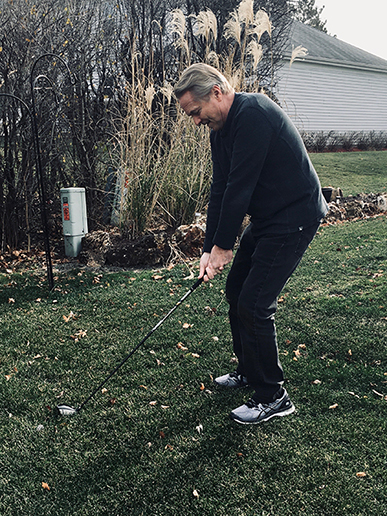
Patient Stories
Engineer chooses robot-assisted knee replacement surgery
Date posted: 12/17/2020
Last updated: 12/17/2020
“I’m a full believer in technology,” says Howard Mickley, 70, of Arlington Heights. With a background in engineering, Mickley turned to science and research when he knew it was time for a knee replacement.
Recently, when arthritis began to make both knees painful, he pursued injections and continued this course of treatment for several years. However, he started to see diminishing returns from the injections. “I was a jogger for a while to maintain weight and health. But then I couldn’t walk around the block or walk up and down the stairs without pain,” he explains. “I knew it was just a matter of time before I had to have surgery.”
Research is Key
He took to the internet to research knee replacement procedures and techniques. Along the way, he discovered robot-assisted knee replacement and liked what he read. “I had previously undergone prostate cancer surgery during which my surgeon used a robotic technique and I was pleasantly surprised with my outcome,” Mickley explains. “I reached a point in my research that someone would have to convince me not to have robot-assisted knee surgery.”
Mickley, with a goal to always have three data points when making any decision, visited three knee replacement surgeons. The third was Dr. Vasili Karas of Midwest Orthopaedics at Rush, whom he chose based upon a comment from a neighbor who underwent MAKO™ robot-assisted knee surgery and called it a ‘night and day difference’ from an earlier, traditional knee replacement surgery. During these physician visits, Mickley also learned that because his arthritis was limited to only a portion of his knee joints, he was a candidate for a partial knee replacement. He liked the fact that in most cases a partial knee replacement means a shorter recovery and less pain than with a total knee replacement.
The Right Choice
Mickley liked Dr. Karas right away and appreciated his experience in the MAKO™ partial knee replacement procedure so he chose Dr. Karas to perform his surgery. They discussed doing his left knee first and exactly how the procedure works. Dr. Karas explained that prior to surgery, the MAKO™ technology would build a 3D model of Mickley’s knee anatomy with the use of a CT scan. He would then virtually perform the key components of the surgery prior to ever picking up a scalpel. Then, during surgery, Mickley’s ligaments would be balanced using the robot. Finally, with the help of the robot, the bones in his knee would be shaved down in the exact spots needed to customize the location of the partial knee replacement.
“Patients often ask whether they should wait for ‘the next best thing’ to be discovered prior to having their knee replaced,” Dr. Karas explains. “The use of technology such as robotics to achieve optimal results on an individual patient basis is this paradigm shift in our profession.”
Dr. Karas and Mickley also discussed expected outcomes and any concerns Mickley had about undergoing surgery during the pandemic. Dr. Karas reassured him of the extreme safety protocols in use at Midwest Orthopaedics at Rush and all surgery locations.
Enjoying Today
Today, just two months following surgery, Mickley is regularly walking up to three miles and is completely off pain medication. He is able to kneel on the floor to play with his granddaughter and uses a rowing machine at home for indoor workouts. Physical therapy is helping him regain his strength and mobility.
Pain is starting to creep up in his right knee and Mickley is confident he has just the right treatment plan and physician to help him when it’s time for another knee surgery.



